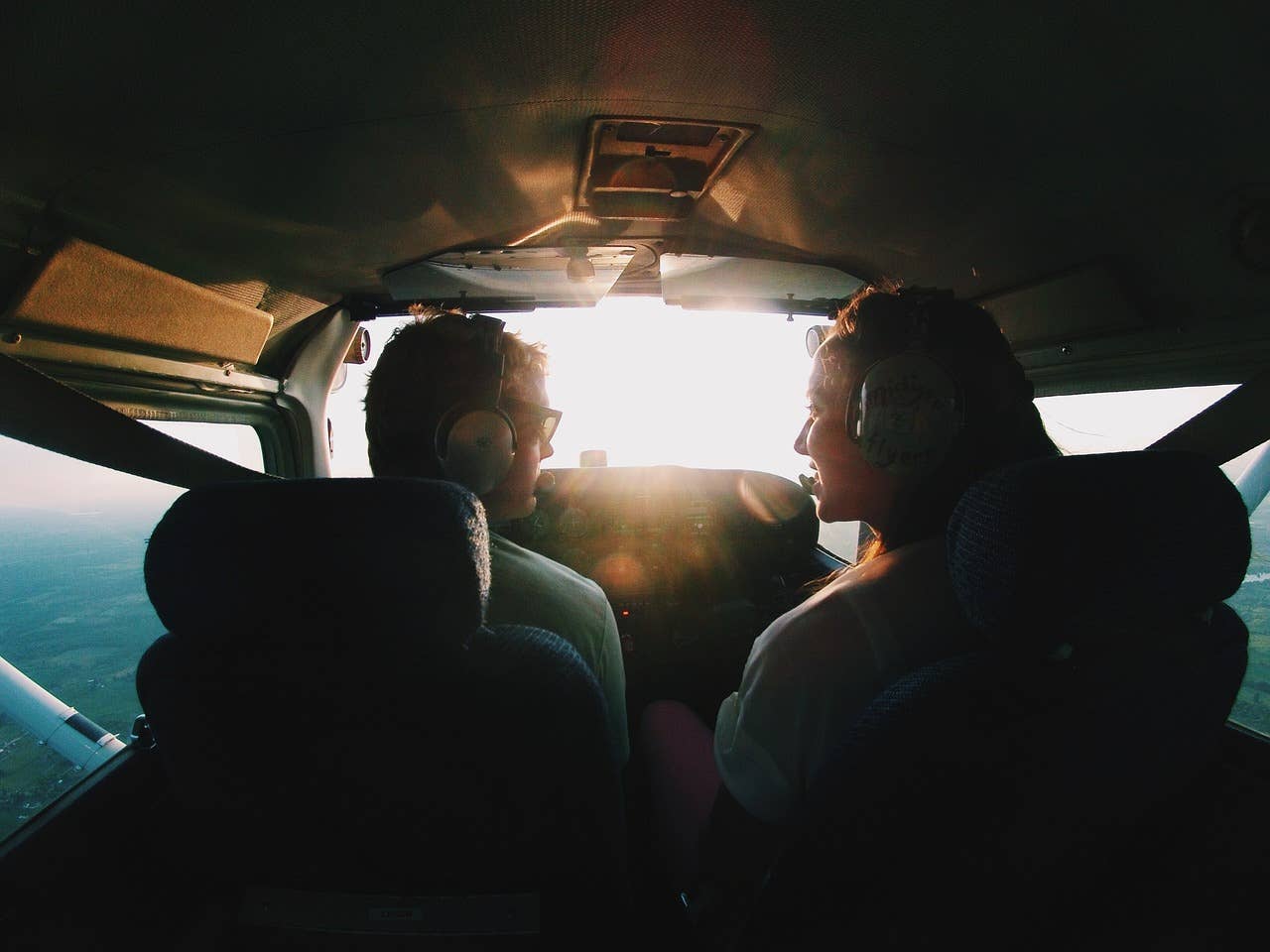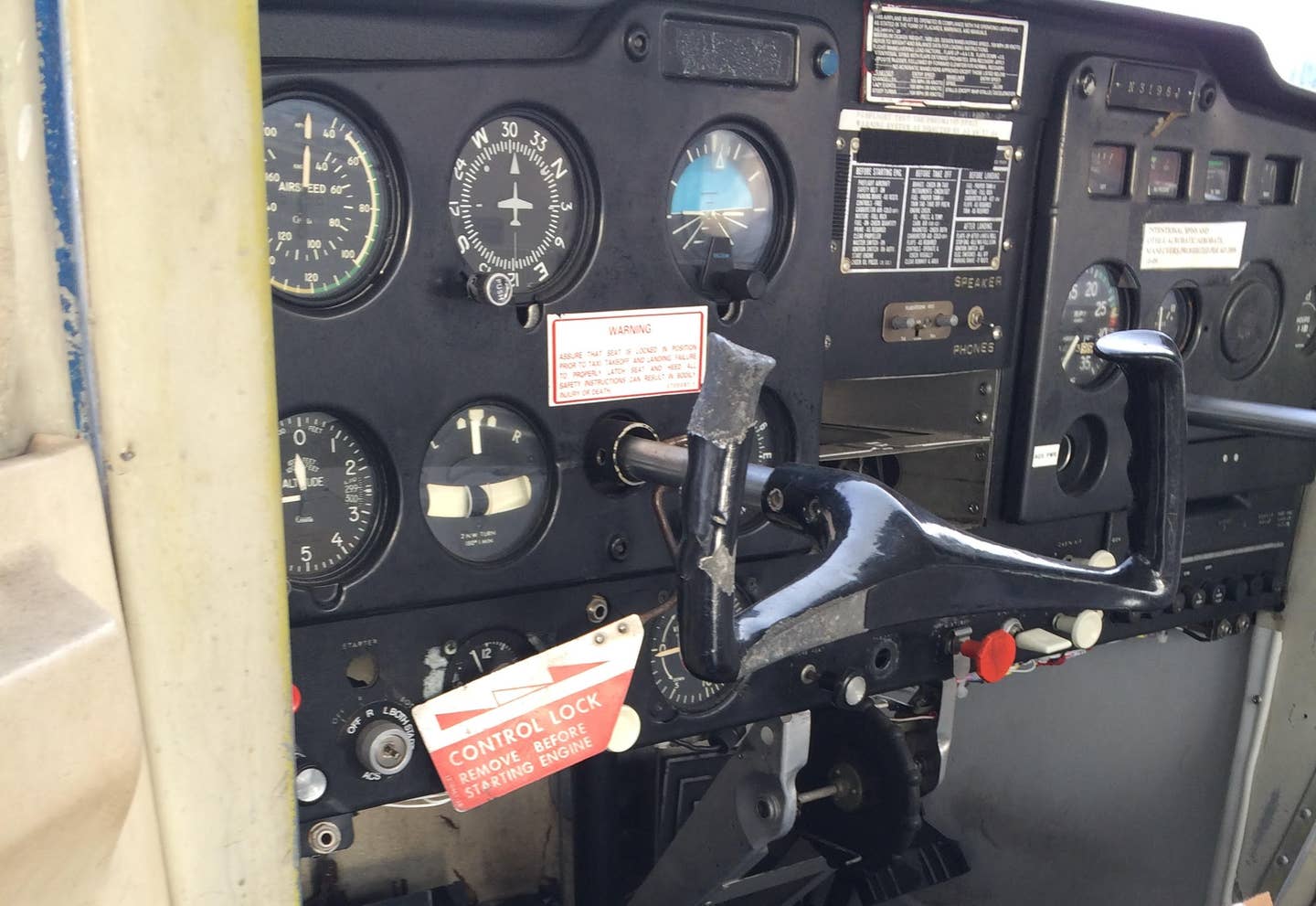Never Let Them See You Sweat as a CFI
Learning to manage risk appropriately is a critical component to being a flight instructor.

Part of a CFI’s job is taking care not to alarm their learner. [StockSnap/Pixabay]
Rod Machado, aviation author, educator, and humorist, had a cartoon in one of his books that depicted a CFI only sweating on the right side of their face. That’s the side the learner, who sits in the left seat, can’t easily see in a side-by-side airplane. The point of the cartoon is that the CFI should never show fear in the cockpit.
I thought about this when I saw Machado over the weekend in Puyallup, Washington, at the Northwest Aviation Conference, where he was the keynote speaker. Known locally as the NWAC, the event is always held in February and is filled with seminars covering everything from earning a seaplane rating or getting an airline job to specialized flying like tailwheel, etc. There are always seminars on safety-related topics such as weather, flying specialty aircraft, and risk management, along with courses for aviation maintenance technicians (AMTs) to enhance their knowledge.
It's also a great place to catch up with other pilots, some of whom you may not have seen in years.
I encountered several of my aviation “sons and daughters” (the ones I have mentored) as well as other clients. I may have only done a few flights with these people or taught their ground school, but they remember something I taught them, therefore, they remember me. It is that way for all teachers, I am told, and that makes me nostalgic for my school days since I remember particular teachers rather fondly. (Ms. Bove, Ms. Gallagher, if you are reading this, please call me.)
One person I encountered was a private pilot I trained more than 10 years ago. He introduced me to his teenager (who had been a toddler when we flew together) by saying, "This is the lady that kept daddy safe."
That's our job. Ideally, the CFI enables you to learn and grow your skills and manage risk, but sometimes things can go sideways. I have found that when the learner has evolved into a CFI, they often tell me about things that happened in the aircraft and how they addressed it, taking care not to alarm their learner.
- READ MORE: Loss of Thrust on Takeoff
Occasionally they are surprised to discover that there was an event like that when I was flying with them, but it was managed into a nonevent.
An example of this came on a cold December day in the early 2000s when I was flying with a commercial certificate candidate in a Cessna 172RG. He needed to log 10 hours to qualify for his check ride. The airplane owner had made it a rule that retractable-gear aircraft in the fleet were not allowed to do touch-and-goes. This rule came to be after a Cessna 182 RG belonging to a local flying club had attempted a touch-and-go at the airport, and during the go part the aircraft settled back down onto the runway while the gear was in transit. There was a CFI/commercial applicant and CFI candidate on board. No one was hurt, but it took several hours to clear the runway. The owner of the C-172 RG also owned the airport, and she wasn't about to risk that with one of her aircraft. So the no touch-and-goes in retractables became the rule.
We respected this, so a full-stop landing with a momentary pause on the runway was the plan as we approached the towered airport. The commercial applicant was an excellent pilot, always ahead of the airplane and on speed so we were both surprised when the touchdown was followed with a violent vibration from the nosewheel.
"My airplane!" I cried instinctively, grabbing the yoke. I had all of 100 hours dual given logged at the time.
The applicant let go.
I held the yoke back in my chest as far as it would go and notified the tower we were getting a vibration and I wanted to clear the active.
"Approved as requested," the tower replied as we rolled toward the taxiway. "Do you need any assistance?"
"Let you know in a minute," I said in my "mother voice." I mean the nurturing mother voice, the one used when talking to a sick or troubled individual or a hurt animal. The mother voice designed to provide comfort. Not the "Do I have to come over there?" mother voice that even scares me when it comes out of my mouth.
The FBO was monitoring the frequency, and when it heard we were exiting the runway, the chief mechanic jumped on the tug and hurried out to the ramp. He had known me for years and recognized my tone meant something wasn't right.
I let the airplane roll to a stop in the transient parking area. I was worried that if I applied brakes, the nosewheel would collapse, leading to a propeller strike and engine teardown and replacement. I hoped it was something easy to fix like a flat tire.
We shut down the aircraft using the checklist, then I suggested the learner go into the restaurant where it was warm while I talked with the mechanic to see what the issue was. The learner complied.
The mechanic, down on one knee examining the nosewheel compartment, suddenly let loose with a string of Anglo-Saxon references that turned the air blue. He quickly grabbed blocks of wood from the tug’s side pocket, used them to prop up the airplane's nose, and told me to take a look.
I dropped to one knee. The Cessna 172 RG’s nosewheel compartment is usually a dirty place. There is grime, grease, and sometimes hydraulic fluid—but not a shiny metal stub of a black rod that has sheared in half. But there it was. I wish I knew exactly what broke, but I didn’t. I can say that the mechanic informed me that, had we brought the gear back up, it would have likely become jammed and not have come back down. We were just darn lucky, he said, that the nosewheel was at the angle it was because, had it been another way, the nose would have collapsed. He said it was propped up by pure luck.
I thought of some Anglo-Saxon references of my own then called the airplane owner, who sent another CFI in a Cessna 172 to come get us.
The commercial applicant remembered the event. He had to borrow an RG from the rescuing FBO to do his check ride a few days later, but until that moment at the trade show, he never knew the details of the damage and how bad it could have been. He laughed, saying he had experienced a few emergencies of his own in his time as a CFI, and he understood my actions completely. Learning had taken place.

Subscribe to Our Newsletter
Get the latest FLYING stories delivered directly to your inbox






